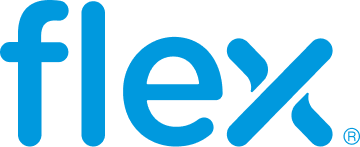“Simplicity drives execution.”
According to Mike McNamara, CEO of one of the world’s largest contract manufacturers, this sums up the reason Flex chose Workday.
With a workforce hovering around 200,000 and operations in 30 countries, Flex believes in keeping things simple. The company is a global leader in design, manufacturing, distribution and aftermarket services for hundreds of fast-moving technology enterprises, and it needs simple, efficient systems to keep up the pace.
“We operate in a very, very competitive worldwide environment”, says McNamara. “We have to be able to redistribute people and activities whenever it’s necessary. As the marketplace changes, as currency changes around the world, we have to be able to move production from one part of the world to another. Or, if there are new technologies being created, we have to make sure we have relevant manufacturing technologies for those new products as they come out”, he continues.
“If I think about the top challenges of a CEO, I think about staying relevant on a continuous basis as product life cycles change, as the world changes and as other competitive challenges happen. And I think the cornerstone of staying relevant is the management of great talent”, he says.
But simplicity hardly describes the situation in which Flex found itself after a 10-year cycle of acquisitions that left the company with 80 different HR systems around the world.
According to McNamara, “It was expensive, it was fragmented, and it wasn’t scalable. With a system like that, you can’t really get consistency in how to manage your workforce and how to manage your culture.”
Embracing the cloud.
So the company began a search for a single system that could pull together its worldwide HR organisation and offer a more cohesive, strategic way to manage the company’s large workforce.
The Software-as-a-Service (SaaS) approach offered by Workday was a natural fit for Flex. Since the HR systems reside in the cloud, no large-scale, in-house technology build-out is required, with its accompanying customisation, configuration and expensive consultants (and regular costly upgrades).
“At Flex, we want to keep things as simple as possible”, says Dave Smoley, chief information officer for the company. “We want to spend as little as possible on implementation, on bringing up new systems. And we need to be able to scale up and down, adding functionality and capability as we need it. SaaS can do that.”
He continues, “With traditional software implementation, you spend millions up front and you try to ride that as long as you can. [Traditional vendors] want you to buy more, spend more, make things more complicated. You have all the people and all the hardware in house.”
“But Workday wants to keep things as simple as possible. They want to deliver a service that’s easy to use. And that approach aligns with the Flex goal of keeping things simple”, he says.
Getting the global picture.
The Flex team knew that manager and employee self-service would be crucial to creating the worldwide HR system the company needed. The HR team had to be free of the time-consuming transactional work that it had been doing manually. Again, Workday had the answer.
Workday’s exceptionally intuitive user interface makes it easy for Flex employees to manage their own data. Managers have an accurate view of their employees, what they cost and what they are working on; employees can make their own routine updates easily. And with Workday’s cloud-based approach, information is available anytime, anywhere, to managers and employees alike.
Says McNamara, “One of the things that we really liked about Workday was the user interface. Part of our objective of going after a new system was to get the employees engaged in the process. Because there are so many employees, we had to have a simple user interface, one that was effective and easy to use. Workday met those requirements.”
Now Flex has a single HR system-of-record around the world. Global reporting, which used to take weeks or months, can now be done in minutes or hours. With the help of a newly empowered HR team, managers can make data-driven decisions to help Flex grow and thrive.
“We really wanted to have a platform to take HR management and talent management to the next level”, says McNamara. “We knew that we needed a system that provided ease of use and scalability, not just from a user standpoint, but also in terms of building analytics and making better decisions for the company. Workday provides the platform for that.”
Ahead of schedule and below budget.
Flex began their project with Workday in 2008. According to their estimates, the company has seen a 30% reduction in total cost of ownership compared with a packaged solution from a traditional software vendor. And in stark contrast with other software projects, implementation was a breeze.
“The implementation was a real highlight for us”, says McNamara. “We ended up implementing this system one year ahead of schedule and below budget. That’s very unusual. In fact, I don’t think I have ever seen it in my career. It’s a real testament to Workday and its commitment to making sure this implementation was a success.”
And what benefits has McNamara seen, now that the company has been using Workday for several years? He mentions two, one tactical and one strategic.
“From a tactical standpoint, the users love it”, he says. “The user interface is simple to use, it’s logical and it’s easy to maintain. And that is not typical of a large-scale systems integration project.”
And the strategic benefit? “We’re starting to see the ease of use of pulling data and information out of this system to make informed and thoughtful decisions about how we run our company”, he says.
“The great strategic advantage is in how we drive toward profit pools and how we deploy talent in the company”, he continues. “We view Workday as the cornerstone of how we make that deployment work, how we recognise talent, manage talent and distribute talent to achieve our objectives.”
Moving talent around the world.
Because of Flex’s worldwide footprint, Workday’s global capabilities – including support for multiple languages and currencies and country-specific security and regulatory support – were particularly important in getting the most from the workforce.
“We have to rebalance our workforce on a continuous basis for our customers”, McNamara says. “For example, we may be spending a lot more time in Malaysia and a lot less time in China. We may want to move more of our workforce into Mexico as opposed to Eastern Europe, depending on the markets we’re accessing.”
He continues, “And Workday actually gives us the data to continuously analyse what our cost structures are – the average labour rates in each area. It has actually changed some of our investment policies for different countries as a result of studying the data and the trends in the data.”
McNamara sees Workday as helping move Flex to a new level of efficiency and competitiveness.
“This is not a software implementation project. This is about how you run the company.”

